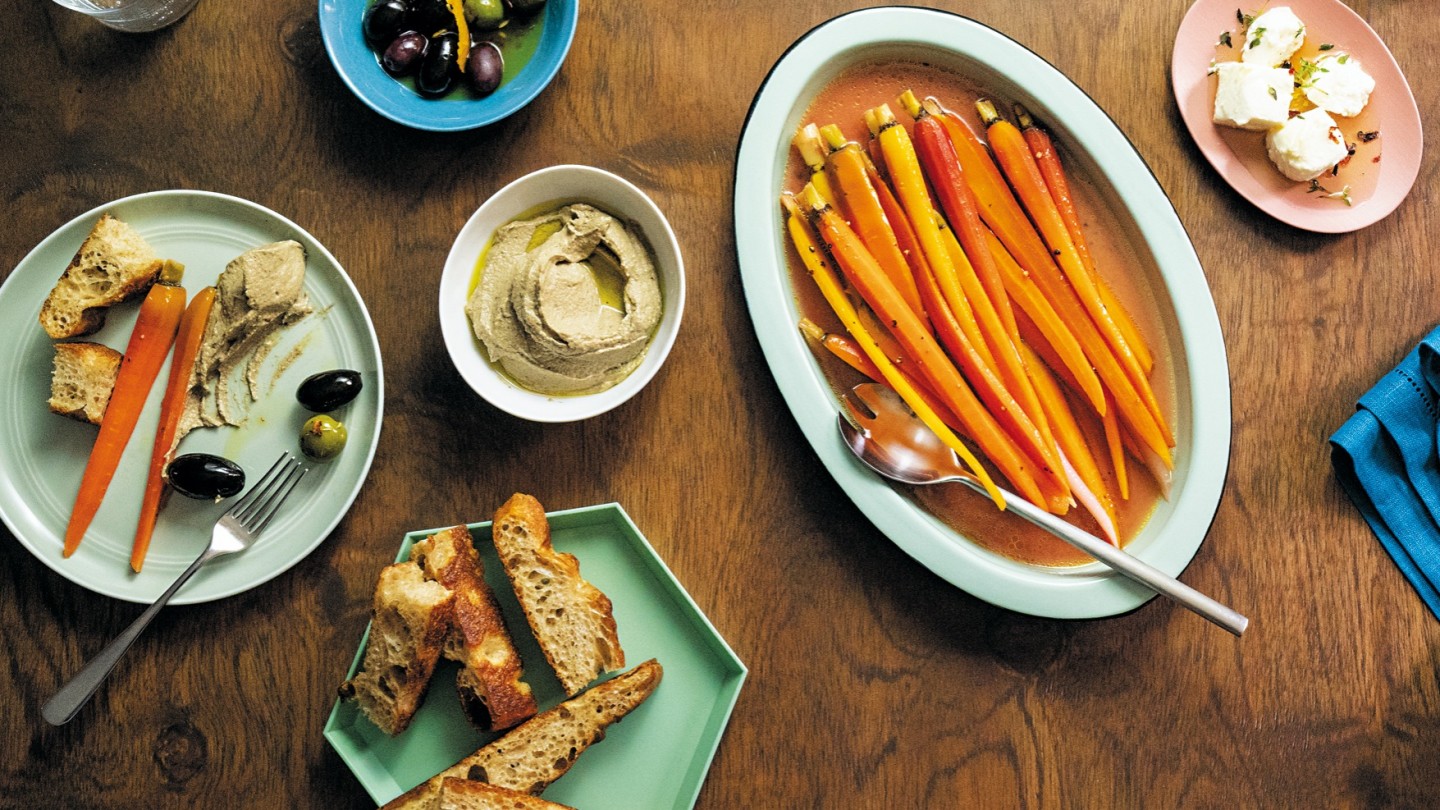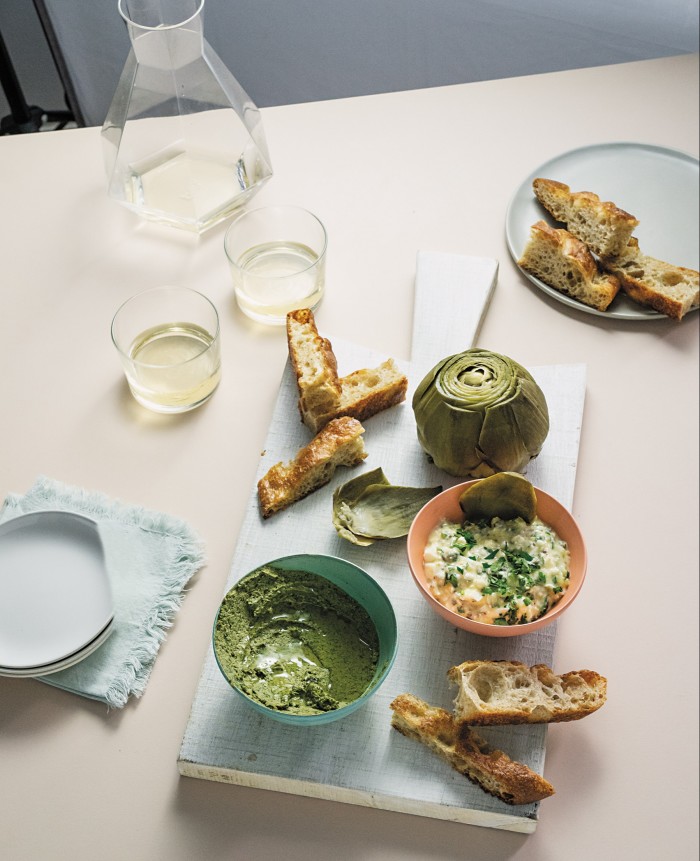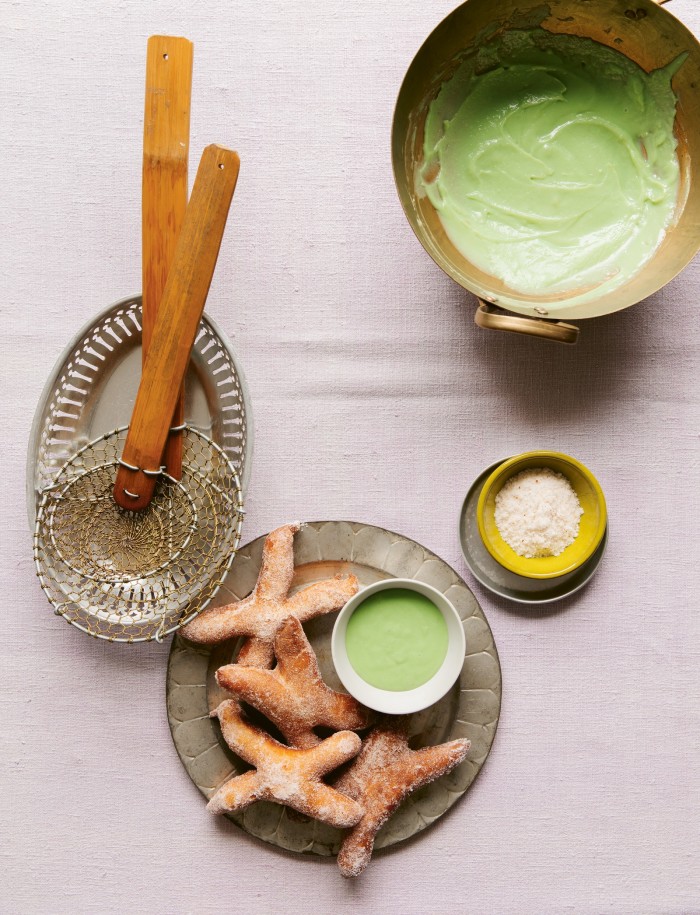Party dips you’ll want to dive into

Roula Khalaf, Editor of the FT, selects her favourite stories in this weekly newsletter.
I’ve always had a soft spot for dip. “The word practically requires an exclamation point,” says American cook Lukas Volger in his new book Snacks For Dinner. And he’s right, it does. “Dip is fun! Dip is a party! Dip is a sigh of relief, because with dip at the table, you can let your pretences down a little.” I’ve got nothing against staples such as sour cream and chive, tzatziki or guacamole. But when you want something with a bit more gastronomic clout, what are your choices beyond hummus?
Snacks For Dinner devotes a whole chapter to dips that feel adventurous and luxurious while being relatively simple to make. Many are built around nut and seed butters or cheese. The toasted walnut and feta dip combines earthiness with creamy tang in what Volger calls a “distinctively rich” crowd-pleaser akin to “savoury frosting”. His toasted chilli/nut butter spread is basically peanut butter and dried ancho chilli, blended with maple syrup and lime and sprinkled with spring onions. Another easy upgrade, the cottage-cheese gribiche adds texture and bite to standard curd cheese with capers, cornichons, cucumber, parsley, mustard and vinegar.
For special occasions including New Year’s Eve, Volger swears by his mixed-mushroom pâté containing dried porcini, cremini, miso, cashew, tahini and a small glug of brandy or whisky. “When I first started making it, over a decade ago, I wanted to contribute a meatless dip that’d feel super-deluxe,” he reports. “I used to make it with heavy cream and butter. It became vegan and it’s just as rich and satisfying.”

On crudités, Volger lays out what amounts to a manifesto on what works and doesn’t, including how vegetables should be “optimised as a dip vessel”. He also makes the case for baking your own crackers, which he insists is surprisingly doable and a great way to impress. Given that guests often assume crackers are store-bought, does he make a point of enlightening them? “I probably wouldn’t pause the conversation to make a point of it,” he says, “but luckily with homemade crackers, you can tell. They have a rustic look, which is more attractive. I make long strips or slabs, so people can just break a piece off.”
Among the piquant dips in Parsi, a new book on Parsi cooking by Farokh Talati, head chef at St John Bread and Wine in London’s Spitalfields, is a tamarind ketchup worth trying. If you don’t fancy making it from scratch, you can approximate a version by mixing tamarind with tomato relish and jaggery, an unrefined sugar used in the Indian subcontinent that lends a rugged depth of flavour. Talati’s beetroot and mustard seed chutney is delicious but dangerous if you’re anywhere near pale furnishings. As a precautionary step, Talati suggests pre-spooning the relish into chicory boats and adding a dollop of goat’s curd. Arguably this turns the dip into a canapé, but let’s not quibble.
Even simpler, his mango-pickle mayonnaise is made by whizzing up mango pickle with one large egg and a dribbling of oil, which turns its tangy sourness into a slather-able emulsion. If you don’t serve it with cumin- or black pepper-studded poppadom, Talati suggests a Parsi snack called Far Far. These prawn-cracker-like wafers come in rainbow shades (from Asian grocery stores), puff up in hot oil and are best showered with salt and pepper or chaat masala.
Deep-fried calf brain is Talati’s other radical suggestion (ideally fried in beef dripping): “There’s the crispy breaded exterior and silken custardy interior and because calf brains don’t have their own flavour, they make the perfect vehicle for sauce,” he urges. “If you dip calf brains into mango pickle mayonnaise, I promise you’ll be obsessed.”

The dips in Kin Thai by British-Thai chef John Chantarasak require a dozen ingredients and are as gourmet as they come. They include lon gapi (shrimp and coconut cream relish) to pair with raw or deep-fried vegetables; akhar sapi thong (cashew and dill relish) served with raw cucumber, chicory, fennel or leafy-topped radishes; and nahm prik num (grilled long-chilli relish) to accompany pork scratchings or Chiang Mai herbal sausage, a slow-grilled aromatic sausage sometimes found in the freezer section of Asian supermarkets. “Failing that, a good-quality beef jerky would work,” says Chantarasak.
Sweet dips are welcome, too. A Kin Thai recipe for pandan custard would make the perfect dip served with sugar-dusted dough sticks or thick-cut toasted brioche. Or why not enliven your food station with a buffet of sweet dips (such as butterscotch sauce, mascarpone cream and berry compôte) for dunking ripe fruit? “Is caramel sauce a dip? Is a bowl of whipped cream… dip? It all comes down to how you approach it, especially if you lean into dessert being interactive,” says Volger.
Making dips interactive is certainly a way of revitalising the classics. Franco-Palestinian chef Fadi Kattan, who is just opening the restaurant Akub in Notting Hill, is known for serving make-your-own hummus at pop-up dinners. Guests are given chickpeas, a wedge of lemon, salt, cumin, sumac, paprika, tahini, extra virgin olive oil and a fork for mashing. For a party, you could pile the warmed chickpeas and spices into individual ramekins and pass around a jug of lemony oil to pour on top. “Bread isn’t necessary,” says Kattan, who likes eating hummus with a teaspoon. It begs the question: is a dip still a dip if there’s nothing to do the dipping?

Comments